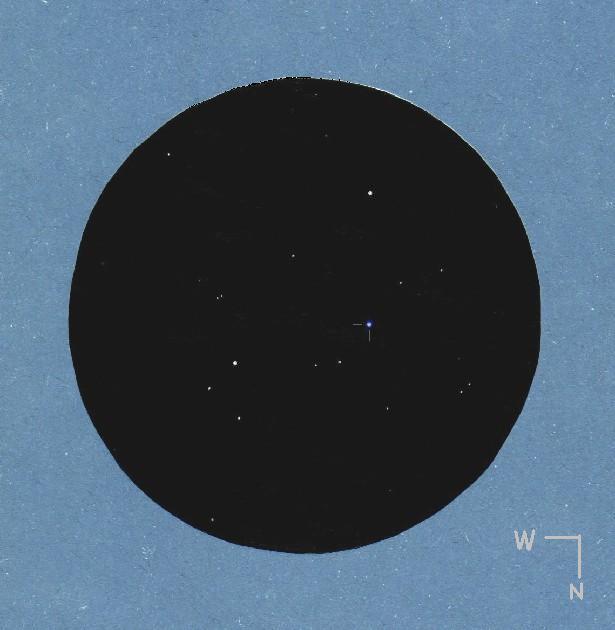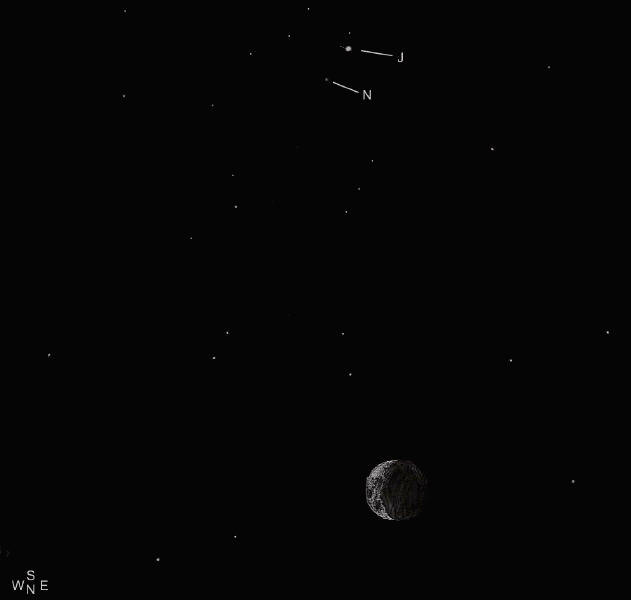
Neptune
Sketch and Details by Frank McCabe
Currently Neptune is the farthest planet from the sun with the demotion of Pluto to minor planet status. Neptune is slightly more massive than planet Uranus but is less voluminous than the seventh planet. Along with Uranus, Neptune is an ice giant. Neptune’s atmosphere contains much hydrogen and helium as well as ices of ammonia, methane and water. Much of Neptune’s blue color is due to measurable amounts of methane.
The discovery of Neptune was done by calculation. Neptune was co-discovered by John Crouch Adams beginning in 1843 and independently by Urbain LeVerrier in 1846. It was the perturbance of the orbit of Uranus in its revolution about the sun that led these astronomers to predicting the location of plant eight in the sky.
Currently the planet Neptune is in the constellation of Capricornus and is 29.1 astronomical units from earth. Its angular size is small at 2.3 arcseconds and at magnitude 7.8 it is not visible to the naked eye as Uranus (mag. 5.8) is from a dark sky site. It is positioned in northeastern Capricornus near several bright stars and therefore is easily located. Neptune reaches opposition in just a few weeks and makes a great target for any size telescope. If your scope can reach magnitude 13.5 try for Neptune’s moon Triton which can be found using the on-line Sky and Telescope’s Triton Tracker and a good high power ocular.
Sketching:
9”x11” white sketching paper; 4B, HB graphite pencils, light brown drawing pencil for Neptune and a blending stump; Scanned and inverted after cutting the sketch from the drawing paper and placing it against a brown paper background.
Scope: 10” f/5.7 Dobsonian: 24 mm widefield eyepiece 60x and 12 mm eyepiece 121x
Date and Time: 7-24-2008, 5:50-6:30 UT
Seeing: Pickering 7/10
Transparency: partly cloudy, Average 3/5
NELM: 4.3
Frank McCabe



